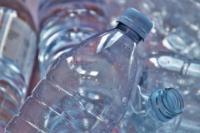
Sustainable plastic using biowaste and captured CO2
Durham Energy Institute research lays out a pathway to making plastic bottles from waste organic material and CO2 captured from power plants. A thorough analysis of the economics shows this process could even be cost competitive for making things like plastic bottles.
While most plastics have generally been produced from petroleum, it is possible to grow many of the hydrocarbons we need through chemical processes or crops. However, these processes have often been more expensive or use crops sources which would compete with food crops.
The article in Nature Sustainability proposes a process using biowaste such as the leftover plant material from sugarcane pressing. This is processed including the addition of some captured CO2 and ethylene glycol produced from corn plants, and produces a plastic polymer called polyethylene furandicarboxylate—otherwise known as PEF. This product is functionally similar to the fossil-based counterpart polyethylene terephthalate (PET) plastic used for water and soda bottles.
The article assesses the renewable biowaste solution from an energy consumption, environmental impacts and production cost point of view at an industrial scale using mass and energy balance, life cycle assessment and payback period. The results show that emissions and energy consumption can be reduced up to 40.5% compared with the petroleum based alternative.
The article finds that the new polyethylene furandicarboxylate (PEF) manufacturing process emits about one-third less greenhouse gas emissions. This would be reduced even further if the heat and electricity used in the manufacturing comes from renewable sources rather than from natural gas.
The alternative PEF plastic is more expensive to produce but it uses waste materials and is a sturdier product which means that it may be possible to make a PEF bottle with 25-percent less plastic. This would mean the production cost per bottle using the new PEF process could be the same as or lower than that of PE.
The article from the Durham Energy Institute research team (Long Jiang, Abigail Gonzalez-Diaz, Dr Janie Ling-Chin, Abdullah Malik, Tony Roskilly & Andrew Smallbone) is based on findings emerging from the EPSRC project “CCS from Industrial clusters and their Supply chains (CCSInSupply)”.
The CCSInSupply project was led by Principal Investigator Andrew Smallbone and Co-Investigator Tony Roskilly from Durham and colleagues from Imperial College London and Cambridge University. The project evaluated multiple potential Industrial Carbon Capture and Storage clusters planned worldwide, in particular the cluster in Teesside, and assessed their impact on products and consumers.
Reference:
Jiang, L., Gonzalez-Diaz, A., Ling-Chin, J. et al. PEF plastic synthesized from industrial carbon dioxide and biowaste. Nature Sustainability (2020). https://doi.org/10.1038/s41893-020-0549-y


/prod01/prodbucket01/media/durham-university/research-/research-institutes/durham-energy-institute/landscapes-cityscapes-montages-etc/Walney-sunset-2000X800.jpg)